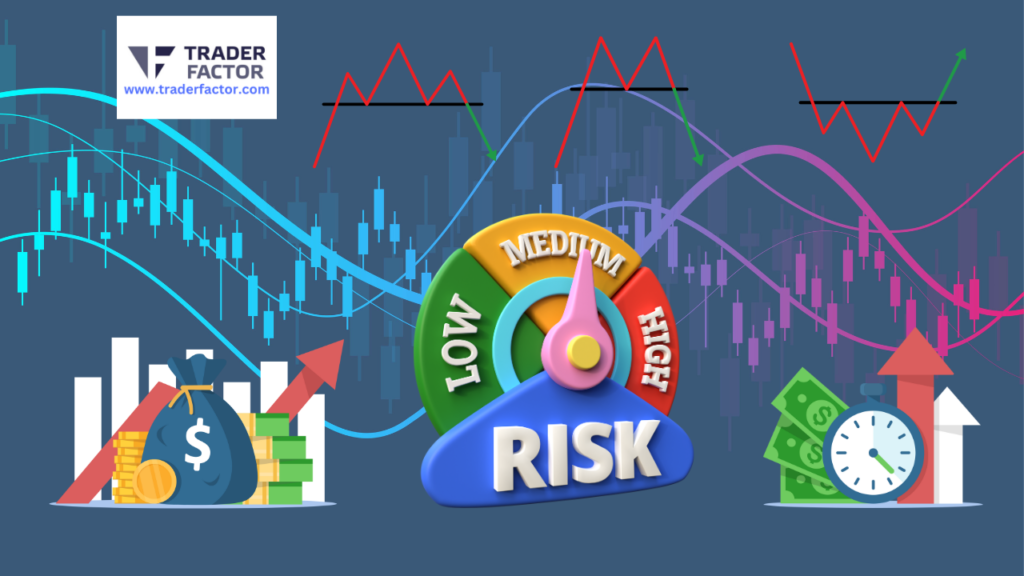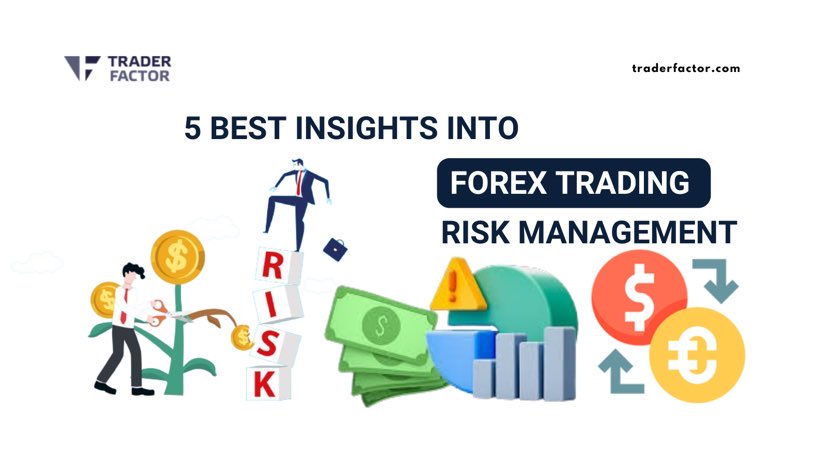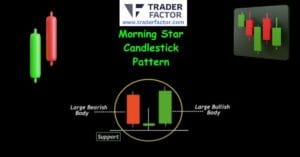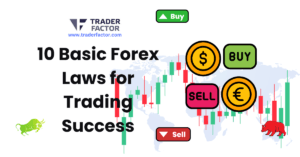Are you looking to improve your forex trading risk management skills?
In this article, we will share the 5 best insights to help you navigate the unpredictable forex market.
Learn about the importance of setting realistic goals, implementing effective risk management strategies, and utilizing stop loss orders and take profit levels.
By continuously monitoring and adjusting your risk management approach, you can protect your investments and maximize your potential for success.
So, let’s dive in and enhance your forex trading journey!
Table of Contents
ToggleKey Takeaways
- Economic data and geopolitical events greatly impact the forex market.
- Setting realistic goals is crucial for effective risk management and long-term success.
- Diversification, position sizing, stop loss orders, and risk-reward ratio are essential risk management strategies.
- Continuous monitoring and adjustments in risk management approaches are necessary to adapt to market conditions.
Understanding the Forex Market Dynamics

To successfully navigate the forex market dynamics, you need to stay informed about the ever-changing factors that influence currency values. The forex market is a complex and highly volatile market, where currencies are constantly being traded. Understanding the dynamics of this market is crucial for anyone looking to trade currencies.
One of the key factors that influence currency values is economic data. Economic indicators such as GDP, inflation, and employment data can have a significant impact on currency values. For example, if a country’s GDP growth is strong, its currency is likely to appreciate. On the other hand, if inflation is high, the value of the currency may decrease.
Another important factor to consider is geopolitical events. Political instability, wars, and conflicts can disrupt the forex market and cause fluctuations in currency values.
Additionally, central bank policies and interest rates play a major role in determining currency values. When a central bank raises interest rates, it can attract foreign investors, leading to an increase in the value of the currency. Conversely, when interest rates are lowered, the currency may depreciate.
Staying informed about these factors and regularly monitoring the forex market can help you make more informed trading decisions.
Importance of Setting Realistic Goals

Setting realistic goals is essential for effective forex trading risk management. By setting achievable objectives, you can have a clear direction and stay focused on your trading journey. Here are some reasons why setting realistic goals is crucial:
- Motivation: Realistic goals provide you with the motivation to keep going. When you have achievable targets, you can measure your progress and celebrate your successes along the way. This positive reinforcement keeps you motivated to continue improving your trading skills.
- Focus: Setting realistic goals helps you stay focused on what matters most. With a clear objective in mind, you can filter out distractions and concentrate on implementing your trading strategy. This focus allows you to make better decisions and avoid impulsive trades that can lead to unnecessary risks.
- Risk Management: Realistic goals enable you to manage your trading risks effectively. By setting achievable profit targets and risk limits, you can control your emotions and avoid overtrading. This disciplined approach helps you minimize losses and protect your capital in the long run.
Implementing Effective Risk Management Strategies

Once you have set realistic goals, it is important to implement effective risk management strategies to safeguard your trading capital. By doing so, you can protect yourself from potential losses and ensure the long-term success of your forex trading endeavors. To help you navigate the complexities of risk management, here are some key strategies to consider:
| Strategy | Description | Benefits |
|---|---|---|
| Diversification | Spreading your investments across different currency pairs and markets to minimize exposure to any single position. | Reduces the impact of potential losses and increases the likelihood of profitable trades. |
| Position Sizing | Determining the appropriate amount of capital to allocate to each trade based on your risk tolerance and the size of your trading account. | Spread your investments across different currency pairs and markets to minimize exposure to any single position. |
| Stop Loss Orders | Placing orders to automatically exit a trade if it reaches a specified price, limiting potential losses. | Provides a predetermined exit point and protects against significant market fluctuations. |
| Risk-Reward Ratio | Assessing the potential reward of a trade against the potential risk, ensuring that the potential profit outweighs the potential loss. | Helps identify trades with favorable risk-reward ratios and improves overall profitability. |
| Regular Evaluation | Continuously monitoring and evaluating your trading performance and adjusting risk management strategies accordingly. | Allows for ongoing improvement and adaptation to changing market conditions. |
Utilizing Stop Loss Orders and Take Profit Levels

Utilize stop-loss orders and take profit levels to manage your forex trading risk effectively. These tools are essential for protecting your capital and maximizing your profits. Here are three reasons why you should incorporate them into your trading strategy:
- Limit potential losses: By setting a stop loss order, you establish a predetermined level at which your trade will be automatically closed if the market moves against you. This helps to limit your potential losses and protect your trading account from significant drawdowns.
- Lock in profits: Taking profit levels allows you to secure your gains by automatically closing a trade when it reaches a specified profit target. This ensures that you don’t miss out on potential profits if the market reverses before you have a chance to exit manually.
- Remove emotional bias: Implementing stop-loss orders and take profit levels helps to remove the emotional aspect of trading. By setting predetermined levels, you can avoid making impulsive decisions based on fear or greed. This allows you to stick to your trading plan and make more rational decisions.
Continuous Monitoring and Adjustments in Risk Management Approach

To effectively manage risk in forex trading, you must continuously monitor and adjust your risk management approach, ensuring that it remains aligned with market conditions and your trading objectives. The forex market is dynamic and constantly changing, requiring you to stay vigilant and adaptable in your risk management strategies.
Continuous monitoring involves regularly reviewing your trading positions, market trends, and economic news that may impact currency movements. By keeping a close eye on these factors, you can identify potential risks and adjust your risk management approach accordingly. This may involve modifying your stop loss levels, adjusting your position sizing, or even exiting certain trades altogether.

In addition to monitoring, adjustments to your risk management approach are crucial to adapt to changing market conditions. For example, if you notice increased volatility in the market, you may choose to tighten your stop loss levels to protect your capital. On the other hand, during periods of low volatility, you might consider widening your stop loss levels to give your trades more breathing room.
To help you visualize the importance of continuous monitoring and adjustments in risk management, consider the following table:
| Market Condition | Monitoring Action | Adjustment |
|---|---|---|
| High Volatility | Assess the potential impact on currency movements | Protect capital |
| Low Volatility | Widen stop loss levels | Give trades more room |
| Economic News Release | Assess potential impact on currency movements | Adjust position sizing or exit trades if necessary |
| Negative Market Sentiment | Monitor for potential trend reversals | Consider reducing position sizes or exiting trades |
Frequently Asked Questions

How Can I Predict Future Market Movements in the Forex Market?
To predict future market movements in the forex market, you can analyze charts, use technical indicators, follow economic news, and develop your own trading strategy. Keep in mind that no prediction is guaranteed.
What Are Some Common Mistakes to Avoid When Setting Realistic Goals in Forex Trading?
When setting realistic goals in forex trading, avoid common mistakes such as setting unrealistic expectations, not considering market volatility, neglecting risk management, and failing to adapt to changing market conditions.

Are There Any Specific Risk Management Strategies That Work Best for Beginner Traders?
There are specific risk management strategies that work best for beginner traders. Start by setting realistic goals, using stop-loss orders, and diversifying your portfolio. Remember to stay disciplined and never risk more than you can afford to lose.
What Are the Potential Drawbacks of Using Stop Loss Orders and Take Profit Levels in Forex Trading?
Using stop-loss orders and take profit levels in forex trading can have potential drawbacks. They may limit your potential profits if the market moves in your favor, but can also protect you from significant losses if the market goes against you.
How Often Should I Review and Make Adjustments to My Risk Management Approach?
You should review and make adjustments to your risk management approach regularly. This will help you stay on top of any changes in the market and ensure that your strategy aligns with your goals.

Conclusion
In conclusion, managing risk is crucial in forex trading to protect your investments and maximize potential profits.
By understanding market dynamics, setting realistic goals, implementing effective strategies, and utilizing stop-loss orders and take profit levels, you can minimize losses and increase your chances of success.
Remember to continuously monitor and adjust your risk management approach to adapt to changing market conditions.
With proper risk management, you can navigate the forex market with confidence and achieve your trading goals.
Disclaimer:
All information has been prepared by TraderFactor or partners. The information does not contain a record of TraderFactor or partner’s prices or an offer of or solicitation for a transaction in any financial instrument. No representation or warranty is given as to the accuracy or completeness of this information. Any material provided does not have regard to the specific investment objective and financial situation of any person who may read it. Past performance is not a reliable indicator of future performance.















